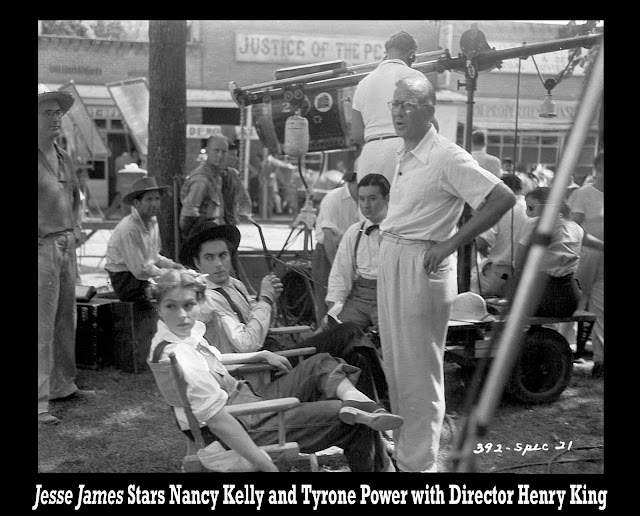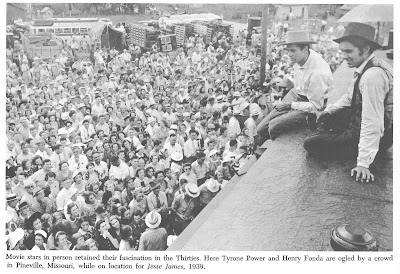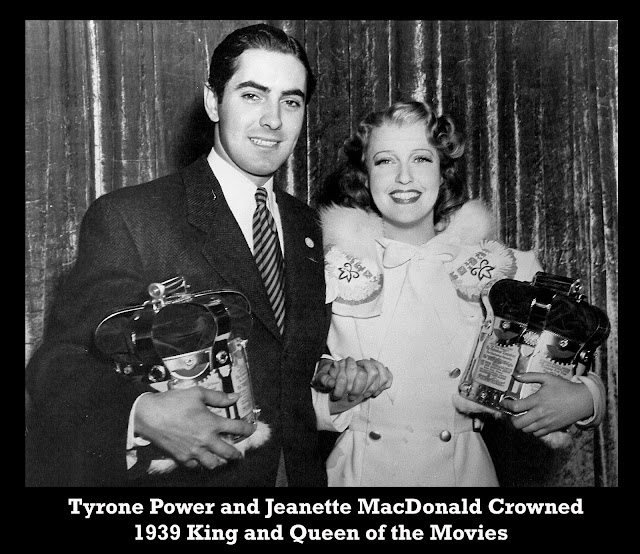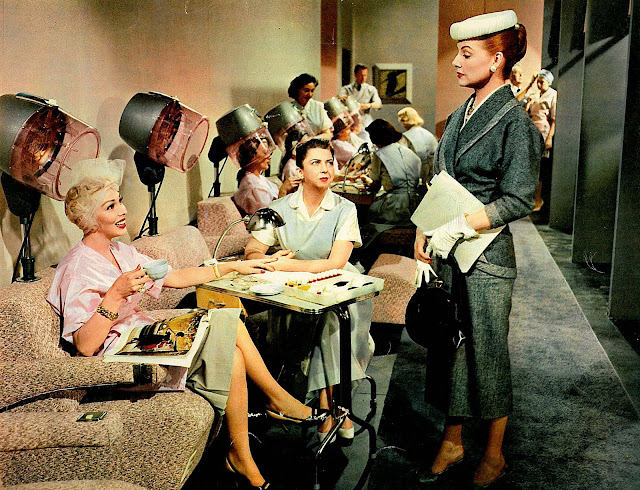
Exhibition's Shakespearean Tragedy
Here's what we knew and had known a long time in 1956: British films are dicey and a risk in US markets. Even the best of them were hard sells with no guarantee you'd be rewarded for quality product. Shakespeare adapting just set bars higher. The one actor/director who'd made success of that was Laurence Olivier with Henry V and Hamlet, yet those were ten years ago by 1956 and a rock-and-rolling generation since was not on record wanting more. Producer Alexander Korda had been decades trying to crash US markets and was nearest among Brit impresarios to have done so. His latest was Richard III as envisioned by Olivier and this time he'd recover at least part of his gamble on a comfortable front end. Being two million was spent on this Bard-tacular, shot in Vistavision and Technicolor, any monies got back quick were welcome. Korda made a devil's bargain with US exhibition's most implacable enemy when he sold premiere dibs on Richard III to NBC ... television, that is ... a major motion picture debuting free on the dreaded tube. The Faustian deal was sealed with the broadcaster's tender of $500,000 to Korda, an amount exceeding domestic gross on many a Brit-pic playing stateside ... and here was AK collecting it all in one lump, months prior to Richard III's American bow.


Hands were thus shook in June 1955, NBC pledging to unspool its expensive pageant just once, hopefully in January of 1956, and in color, more a symbolic (and publicity generating) gesture as there were only 25,000 color television sets in the country to see RIII that way. Korda meanwhile shopped for a US distributor to coordinate two-a-day roadshowing, these engagements to immediately follow NBC's broadcast. British executives, taking a tip from Walt Disney's successful "Disneyland," believe that a TV showing of a film stimulates movie attendance, reported TIME magazine in July, though The New York Times acknowledged there was many a Hollywood executive who'd give them an argument over that forecast. Korda's deal with NBC was not without precedent. He'd recently peddled The Constant Husband to them for a $200,000 first-run in America, though worrisome must have been fact that the comedy garnered poor reviews from tele-critics and saw no interest from theatres afterward. NBC's mission now was to get some of the RIII half-million back in sponsor buys. As of December, however, they were getting a cool reception, according to Billboard, so much so that Richard's proposed evening berth was rethought to maybe a daytime spot. Said the trade: The move would cut the price of the show to advertisers from its current selling price of $900,000 for primetime showing to about $450,000 for the Saturday afternoon airing. Despite said adjustment, a new year saw NBC still beating the bushes hard for advertisers to take it off the hook. One-shot spectaculars, surely what Richard III shaped up to be, were in doldrums generally, sponsors by now more vested in popular week-to-week programs with their loyal followings. NBC had to get Richard III on the air by a March 10 weekend, per promise to Korda. Would they have to do so without ad support?
 General Motors came to the rescue in late January. They'd buy most of Richard III's real estate and interrupt the feature but three times to hawk automotive wares (per promise to Olivier when the deal was struck). GM's outlay was between $350-400,000 --- with the rest "sustaining" time picked up by NBC. Richard III was set to run on Sunday afternoon, March 11, 1956, opening later that night at New York's Bijou Theatre, a charity benefit attended by Laurence Olivier and other cast members (Toronto had a "North American Roadshow Premiere" on March 1). Ticket prices were apropos to hard tickets ... $1.50 to $2.80, with a $3.00 top on weekends. Richard III was figured to settle in for a long run, but exhibition watched warily. Would customers pay for a show they'd just had for TV Sunday dinner? Never mind sock business it had done in England since premiering there on December 13. They hadn't got Richard III in advance on tele's. Still, business was record-shattering over there, and despite highbrow content, hopes were high that RIII might score in the states. General Motors was sufficiently impressed to line up a mid-broadcast "talk" by Dr. Frank Baxter, Professor of English Literature at USC, who'd regale viewers as to matters Shakespearean during the four-five minute intermission. Does Baxter's name ring bells? He lent gravitas to, among other things, a series of Bell science films shown ad nauseum in schools, then introduced The Mole People later in 1956, warning patrons as to possibility of lost civilizations beneath the earth. Could GM have picked a better man to enlighten us?
General Motors came to the rescue in late January. They'd buy most of Richard III's real estate and interrupt the feature but three times to hawk automotive wares (per promise to Olivier when the deal was struck). GM's outlay was between $350-400,000 --- with the rest "sustaining" time picked up by NBC. Richard III was set to run on Sunday afternoon, March 11, 1956, opening later that night at New York's Bijou Theatre, a charity benefit attended by Laurence Olivier and other cast members (Toronto had a "North American Roadshow Premiere" on March 1). Ticket prices were apropos to hard tickets ... $1.50 to $2.80, with a $3.00 top on weekends. Richard III was figured to settle in for a long run, but exhibition watched warily. Would customers pay for a show they'd just had for TV Sunday dinner? Never mind sock business it had done in England since premiering there on December 13. They hadn't got Richard III in advance on tele's. Still, business was record-shattering over there, and despite highbrow content, hopes were high that RIII might score in the states. General Motors was sufficiently impressed to line up a mid-broadcast "talk" by Dr. Frank Baxter, Professor of English Literature at USC, who'd regale viewers as to matters Shakespearean during the four-five minute intermission. Does Baxter's name ring bells? He lent gravitas to, among other things, a series of Bell science films shown ad nauseum in schools, then introduced The Mole People later in 1956, warning patrons as to possibility of lost civilizations beneath the earth. Could GM have picked a better man to enlighten us?

NBC estimated that twenty-five million would be watching come March 11 (over 146 stations in forty-five states). So as not to offend, they'd remove three minutes from Richard III's two-hour and forty minute length, these including a decapitation, two children being suffocated, and Richard's extended death throes on Bosworth Field. The network would not, however, cut the word bastard from Shakespeare's prose. TV competition for that weekend was less than fierce, although CBS countered in part with a Ford Star Jubilee starring Bing Crosby, High Thor, "a Musical Production of the Maxwell Anderson Fantasy." That ran Saturday night of the 10th, and garnered ratings, if not positive reviews. Response to Richard III was more upbeat. Here was Olivier's best turn at Shakespeare yet, said many. Scribes wondered if a new era was being ushered in even as some expressed reservation over fitness of big-screen spectacles on TV, especially ones in Vistavision. The New York Times saw Richard III as compromised visually by twenty-one inch screens: The normal household distractions, such as a ringing telephone or a wriggling child, are also less conducive to complete absorption than the disciplined silence that prevails in a movie house. The black-and-white image viewed by an overwhelming majority at home was adjudged fuzzy and flat, though it was worth noting (courtesy Dr. Baxter) that more people saw Richard III (on television) than had witnessed all the stage productions since Shakespeare's time.

Many schools assigned Richard III as homework, pretty much blowing a weekend for kids nationwide (wonder how many still remember?). NBC would sound trumpets over record viewership approaching fifty million, which as of 1956, represented nearly a third of the country's population (The Motion Picture Herald called this figure unrealistic). A doubting press figured it for braggadocio, and wondered what fraction of viewers submitted to the entire three hours. Calmer reason suggested no more than twenty-five million hung in for the dollop. Still it was a fantastic number, as The New York Times acknowledged: Television has every reason to be heartened by the film's very substantial acceptance (and surely it was, judging by the NYT's own front page coverage). Buckets of Richard III publicity sallied forth. LIFE and Newsweek gave it covers and much coverage within. Theatres reported business slightly off during the Sunday broadcast, not an outcome appreciated by exhibitors. Lopert Films (a United Artists sub) was handling US distribution for Richard III. They claimed the TV run would only enhance business for theatres. Sourer notes were struck by Laurence Olivier, who called NBC's presentation deplorable. I'd been afraid of this, but the facts turned out worse than my fears, he said to The Washington Post. Advertising intervals, the network's mandated cuts, and a lack of size and color were chief among the actor's complaints (yet hadn't he signed off on the deal fully aware of these contingencies?).
Harrison's Reports monitored theatrical runs of Richard III and laid down home truths after dust settled. Poor Richard, wrote Pete Harrison in July, if any producer is still toying around with the idea of making one of his new productions available to television to be shown nationally over a major network before releasing it for theatre showings, the experience had with Richard III should make him give up the idea. Harrison noted the film's recent departure from the Bijou in New York after a run of eleven weeks and one day, during which business was generally below expectations, with plenty of seats available for most of the two performances given daily (previous Shakespeares Hamlet, Henry V, and Julius Caesar had lots longer runs). He branded Richard III a flop and warned that the effect of a telecast prior to theatre bookings is deadly rather than helpful. Showmen across the country shunned Richard III and punished a worthy product for having fraternized with free-vee. Overall figures were dismal. RIII brought back a frightful $43,000 in domestic rentals, later augmented with mid-60's bookings that realized an additional $9,000. Unfortunate outcome of all this was fact that so few audiences got to enjoy 35mm prints of Richard III, which having derived from Vistavision negative, looked spectacular. There were years spent in more-or-less lockdown, broken when Janus Films syndicated Richard III to television in the seventies, albeit trimmed to 138 minutes. Criterion would eventually offer a widescreen DVD, which was complete, and of stellar quality. Kudos to them for making this most visually spectacular of Shakespeare dramatizations available again.












































